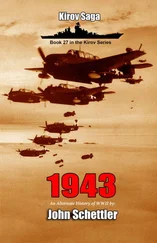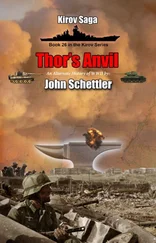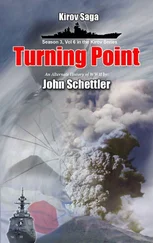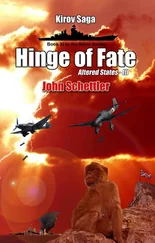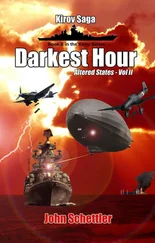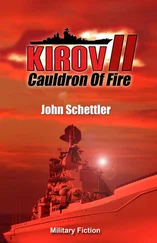John Schettler - Grand Alliance
Здесь есть возможность читать онлайн «John Schettler - Grand Alliance» весь текст электронной книги совершенно бесплатно (целиком полную версию без сокращений). В некоторых случаях можно слушать аудио, скачать через торрент в формате fb2 и присутствует краткое содержание. Жанр: Альтернативная история, на английском языке. Описание произведения, (предисловие) а так же отзывы посетителей доступны на портале библиотеки ЛибКат.
- Название:Grand Alliance
- Автор:
- Жанр:
- Год:неизвестен
- ISBN:нет данных
- Рейтинг книги:3 / 5. Голосов: 1
-
Избранное:Добавить в избранное
- Отзывы:
-
Ваша оценка:
- 60
- 1
- 2
- 3
- 4
- 5
Grand Alliance: краткое содержание, описание и аннотация
Предлагаем к чтению аннотацию, описание, краткое содержание или предисловие (зависит от того, что написал сам автор книги «Grand Alliance»). Если вы не нашли необходимую информацию о книге — напишите в комментариях, мы постараемся отыскать её.
Grand Alliance — читать онлайн бесплатно полную книгу (весь текст) целиком
Ниже представлен текст книги, разбитый по страницам. Система сохранения места последней прочитанной страницы, позволяет с удобством читать онлайн бесплатно книгу «Grand Alliance», без необходимости каждый раз заново искать на чём Вы остановились. Поставьте закладку, и сможете в любой момент перейти на страницу, на которой закончили чтение.
Интервал:
Закладка:
As Tunguska slowly climbed, Karpov looked out over the sprawling city, wreathed in a blanket of white snow, and realized it may be enjoying the last peace in the silent cold of winter for the next four years. The Germans had launched Operation Barbarossa on June 22, of this year, just months away. He knew the action and timing of that event would likely be very different in this history, but war was coming, as sure as the seasons turned. Would Moscow stand this time? The Battle for Moscow had been fought in October of 1941, even as the Germans were pounding at the gates to the Caucasus at Rostov and the Crimea. His Siberian divisions had been the reserve that had helped to save the city, and he wondered if he would be leading his men back to this city next year to fight for Sergie Kirov. We shall see, he thought.
They would head due west for the next thousand kilometers, until he reached the Baltic Sea around midnight. Somewhere north of Kaliningrad, they would turn southwest and overfly Gdansk en route to Berlin. Karpov would seal his fame as the man who boldly overflew the heart of the German Reich. At midnight he ordered the course change and altered speed ahead two thirds. It was another 500 kilometers to Berlin, and he wanted to approach the city in darkness, but time his arrival there at dawn. He retired for a good night’s rest, leaving orders that the ship was to be alert and ready to man air defense stations at sunrise.
The sun rose on a clear morning at a little after 08:30 that day, and the airship was approaching the city as planned, cruising at an altitude of 12,000 meters, which Karpov deemed safe enough. It was a dizzying height for that day, but he was soon to find that the Germans were not pleased to have his airship over their city.
A flight of three Bf-109s had been scrambled to investigate the unusual sighting. The first German Zeppelins had a service ceiling of about 6,000 feet, and this was soon doubled to 13,000 feet by 1916. They had also produced a rigid airship design known as the Hohe Bergsteiger, or “Height Climbers,” to operate above 20,000 feet, but even at that height conditions were so harsh that they saw little service. Oil lines could clog up, windows would crack with the bitter cold, radiators would freeze, and the crew would battle dizziness, oxygen deprivation and bone chilling temperatures.
Karpov knew all this when he inserted himself into the design process for Tunguska, using the knowledge he had access to in his service jacket computer to correct all these deficiencies. Now he was able to achieve altitudes twice that of the best German Height Climbers, and so he knew he could not be opposed by any remaining German airships here either. But three Bf-109s were rising that morning, intent on investigating this impudent intruder that had been spotted by a flight of German bombers just after dawn.
Karpov had mounted the best cameras he could find for high altitude photography, and he had his camera crews busy with that job in a lower gondola pod when the fighters were first seen.
“Enemy aircraft reported by the Topaz crews, sir. Number four operator has what looks to be three contacts climbing on our position.”
“Action stations,” said Karpov calmly. “We are a neutral country, and our insignia is plainly visible. Let’s see what they do here.”
Bogrov had some misgivings about that, and this whole operation seemed very risky to him. His eye strayed to his altitude gauge, noting they were level at 12,000 meters. He doubted the planes would get this high, but he was wrong. The Bf-109 was one of Germany’s highest flying fighters at that time, and the German planes were straining to get near the intruding airship, which loomed ever larger as they climbed.
The planes were among the fastest and best of the early fighting, with more aerial kills logged than any other fighter during the war. But this was a tall order. As Willy Beyer led his flight higher, he could feel his engine straining to make the altitude. As they approached he could see the insignia on the tail of the massive airship, though he did not know what it was. His only thought was that it looked to be Russian, and he reported as much on radio. The orders soon came back to fire warning shots across the bow of the airship. Still a couple thousand feet below his target, he nonetheless maneuvered his plane and fired a burst from his twin 13mm MG 131 machine guns, and this was followed by warning in German on the radio.
Karpov was not happy. These planes had climbed higher than he expected, and so he immediately gave Bogrov an order to gain another thousand meters in altitude. Even as he did so he stood his air defense crews up on the three lower gondolas, and soon they were training their twin machineguns and tracking the swift fighters as best they could. He found a German speaker and sent out a message that they were from the Free Siberian State, warning the Germans that any further hostility would be answered.
Willy Beyer had a good laugh at that. He reported that the Zeppelins were Siberians, and seemed to be intent on overflying the city. His ground control was adamant, order the Zeppelin off, or drive it off if it failed to comply. This was a war zone. He swung around, his plane a bit listless at the altitude, and saw that he could no longer climb. Amazingly, the Zeppelin was receding above him, slowly rising through a thin, wispy cloud. He had never heard of a Zeppelin that could fly at such altitudes.
Following his orders he decided to issue one further demand to turn north at once, and was able to point his nose upward to fire yet another warning shot, which streaked in hot yellow tracers well below the main gondola.
“They order us to turn north away from the city at once, sir.” The radioman gave Karpov a wide eyed look, the thought of those rounds riddling the pressurized cabin none too welcome in his mind.
“They order us to do nothing,” said Karpov. “If they cannot fly up here and look at me eye to eye, then we are outside the boundaries of their controllable airspace.” Then Karpov heard the rattle of the fighter’s guns and saw the tracers streak by.
“Forward gunners!” Karpov shouted an order over the voice tube. “Give them the Fedorovs!” He was referring to the Fyodorov-Ivanov Model 1924 twin barrel machineguns mounted on his gondolas. It had been designed as an experimental main machinegun for the old T-18 tank, but Karpov got his hands on several for the airship, and was fond of calling it the ‘Fedorov Gun,’ after the navigator he knew by that same name.
When the planes came around again, Willy Beyer got a nasty surprise this time. Tunguska had two twin MGs on its forward gondola, four of the gun mounts on the main gondola, and two more aft. There were also guns on top of the ship in open air platforms, but Karpov had not ordered them crewed, as he did not expect any attack from above his current position. The two mounts forward opened fire, sending streams of rounds at the fighter as it swept by below the ship, and one gunner had led his target well and scored a hit!
Beyer felt the rounds bite into his wing, big enough to do some serious damage, and he immediately called out for his wing mates to engage. This time the Germans would use the bigger 20mm cannon, but Tunguska had been slowly climbing and was now another thousand meters higher, well above the service ceiling of the planes. They swooped and then tried to pull their noses up to engage, but the firing was misaligned with the sluggish performance of the aircraft at this extreme altitude. One burst of fire pierced the nose of the airship, but the new double thick Vulcan self-sealing gas bags took the hit and resealed. The rounds passed completely through the nose, just barely missing interior duralumin beams, but did no damage beyond tearing holes in the outer canvass.
Читать дальшеИнтервал:
Закладка:
Похожие книги на «Grand Alliance»
Представляем Вашему вниманию похожие книги на «Grand Alliance» списком для выбора. Мы отобрали схожую по названию и смыслу литературу в надежде предоставить читателям больше вариантов отыскать новые, интересные, ещё непрочитанные произведения.
Обсуждение, отзывы о книге «Grand Alliance» и просто собственные мнения читателей. Оставьте ваши комментарии, напишите, что Вы думаете о произведении, его смысле или главных героях. Укажите что конкретно понравилось, а что нет, и почему Вы так считаете.





